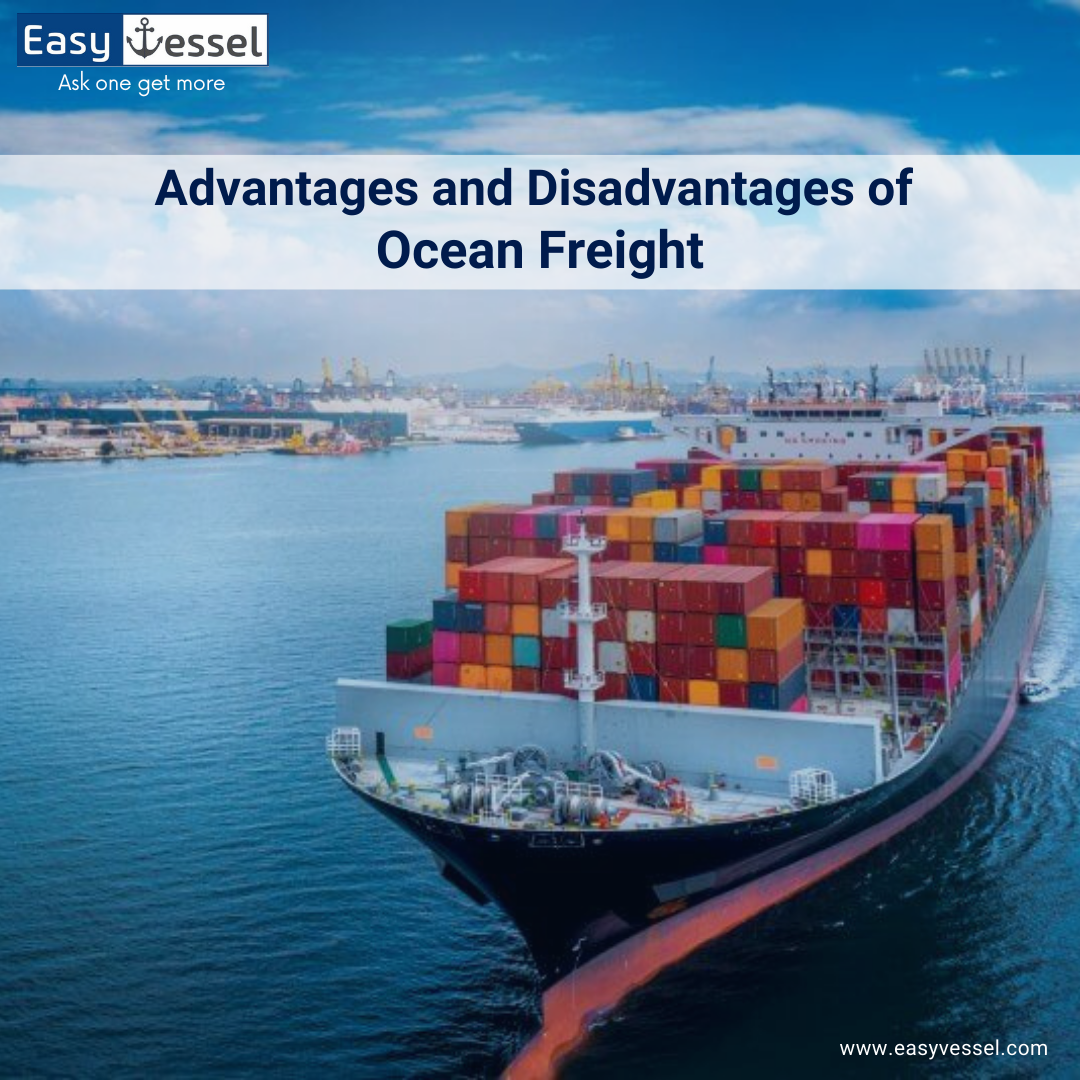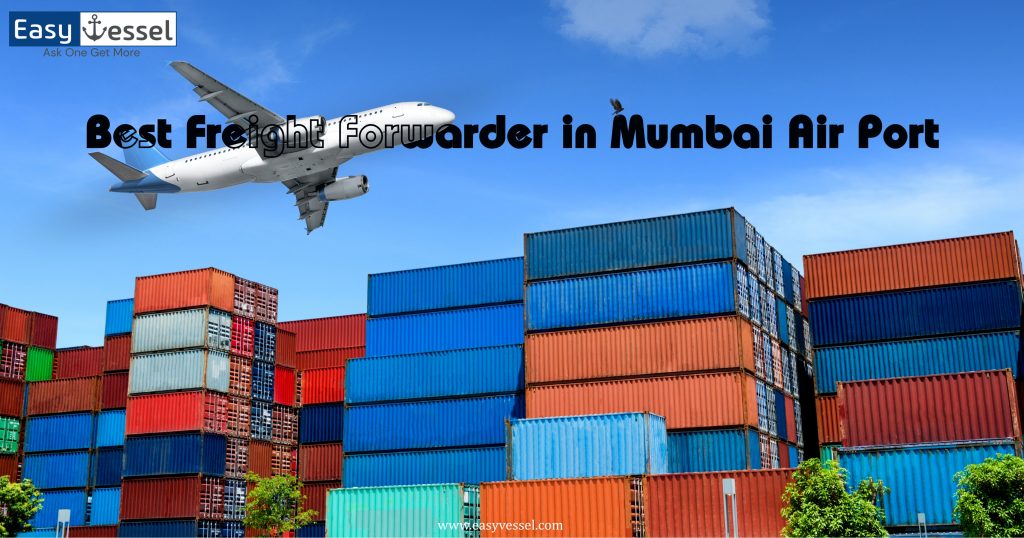What is Ocean Freight Shipping:
- Ocean freight shipping, also known as sea freight, is a method of transporting goods in large quantities using cargo ships across the world’s oceans and seas.
- It’s a cost-effective and reliable way to move heavy, bulky, or non-perishable items, such as machinery, vehicles, raw materials, or consumer goods, from one port to another internationally.
- The process involves loading goods into containers, which are then stacked and secured on ships.
- Ocean freight offers various container sizes and types, like standard containers, refrigerated containers, or specialized containers, allowing for flexibility in shipping different types of cargo.
- It’s a slower mode of transportation compared to air freight, but it’s the primary choice for businesses seeking cost-efficient global transportation of goods.
Advantages of Ocean Freight Shipping:
Ocean freight shipping offers several advantages, here are 7 key advantages of sea freight shipping:
Cost-Effective:
- Ocean shipping saves money for moving big loads across long distances.
- Ships carry a ton, so each thing you ship costs less when there’s a bunch together.
- It’s great for moving lots without a rush.
- And compared to flying, it’s cheaper, helping businesses save when shipping worldwide.
Great for Bulk and Large Items:
- Ocean freight’s capacity for bulk goods means ships can carry huge amounts of items in one go, acting like floating warehouses.
- They transport everything from raw materials to heavy machinery, functioning like giant global transport trucks, making it crucial for efficiently moving massive quantities across long distances economically.
Environmentally Friendly:
- Ships have a lower carbon footprint per unit of cargo transported compared to air freight, making sea transport a more eco-friendly option.
- Ships can carry lots of stuff at once, using less fuel for each item they transport.
- Ships larger capacity means less fuel per item, reducing emissions, and making it greener for long-distance cargo transport.
Reliability:
- Ocean freight’s reliability means it’s consistent and dependable.
- Ships face fewer disruptions like traffic or weather problems, sticking to planned schedules and routes.
- This predictability ensures goods arrive more reliably, crucial for businesses needing secure and consistent transportation across oceans.
Versatility in Cargo Types:
- Ships in ocean freight carry various cargo types, from raw materials to vehicles, using different containers for safe transport.
- This adaptability is vital for diverse industries, making ocean freight a versatile choice for shipping goods worldwide.
Global Reach:
- Ocean freight’s global reach means ships can go to ports all over the world, enabling businesses to trade internationally by transporting goods across oceans.
- This connection links diverse markets, allowing companies to expand their reach globally and sell goods worldwide.
Reduced Risk of Theft or Damage:
- Ocean freight reduces the risk of theft or damage by ensuring tight security on ships.
- This protection creates a safe environment for cargo during long-distance transport, minimizing the chances of theft or damage along the way.
Overall, sea freight shipping is a reliable, cost-effective, and efficient mode of transporting goods, especially for businesses dealing with bulk shipments or those not constrained by tight delivery timelines.
Disadvantages of Ocean Freight:
Sea freight shipping, while advantageous, also has some drawbacks:
Longer Transit Times:
-
- Ocean freight’s major downside is longer transit times.
- Unlike air or land transport, sea shipping takes weeks or even months, unsuitable for urgent deliveries, affecting businesses needing quicker turnaround.
Weather-Dependent Delays:
-
- Weather-related delays are a big issue in ocean freight.
- Storms or rough seas can slow down or damage ships, causing delays or cargo problems.
- These disruptions mess up schedules and affect shipment reliability.
Limited Suitability for Urgent Shipments:
-
- Due to longer transit times and potential delays, sea freight might not be ideal for time-sensitive or urgent deliveries.
Handling of Perishable Goods:
-
- Handling perishable goods in ocean freight is tough due to longer travel times.
- Keeping items like fruits, veggies, or foods fresh is hard without controlled temperatures, risking spoilage and affecting their quality upon arrival.
Port Congestion and Administrative Procedures:
- Port congestion and complex administrative procedures at ports can sometimes lead to delays in loading or unloading cargo.
Limited Accessibility to Inland Areas:
-
- In some cases, ports might not be as close to the final destination, requiring additional transportation modes to reach inland areas, which can add to the overall transit time and cost.
- This added step increases logistics complexity, time, and costs for delivering goods to these areas.
Documentation and Regulatory Requirements:
-
- Ocean freight faces hurdles with documentation and regulations.
- Loads of paperwork, customs forms, certificates, and meeting diverse rules make shipping complex.
- Complying demands lots of time, attention, and resources, potentially causing delays and extra admin work for businesses.
In summary, These limitations should be considered when choosing sea freight as the mode of transport for goods, especially when time sensitivity or specific delivery requirements are essential.
Conclusion:
In conclusion, Ocean freight is affordable and eco-friendly for moving large, non-perishable goods worldwide. It’s reliable and flexible but slower than air freight. Delays can occur due to weather, administrative processes, and longer transit times. While advantageous, it demands thorough documentation and isn’t ideal for urgent or highly perishable items.
Easyvessel is the best way to connect importers and exporters with multiple freight forwarders to get freight rates in multiple shipping lines with 0% commission.
Save time and money at easyvessel.
References:
Frequently Asked Questions
Export ocean freight refers to the cost incurred for shipping goods or cargo from one country to another using cargo ships or vessels. It covers the expenses associated with transporting products across international waters. This cost includes loading the goods onto the ship, securing them for the journey, and delivering them to the destination port in another country.
Ocean freight refers to the transportation of goods or cargo via ships across seas and oceans. It’s a method of moving large quantities of products internationally through waterways. This shipping involves loading goods into containers, which are then transported on cargo ships between various ports worldwide.
Sea freight is cost-effective for transporting heavy cargo globally, unlike air freight. It’s eco-friendly with less carbon emissions and offers reliable schedules due to fewer weather disruptions. Ships handle large machinery and various cargo types. It connects major ports worldwide, providing secure transportation and reducing the risk of damage or theft during transit.



